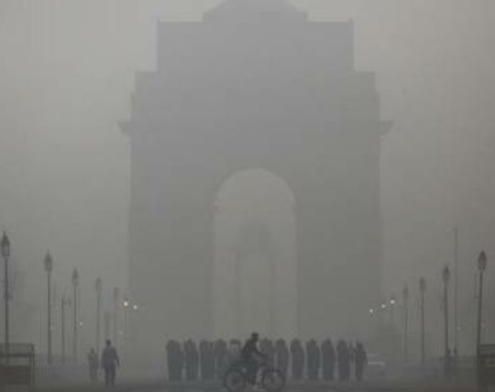New Delhi (Agencies): Air pollution in New Delhi hit hazardous levels Thursday after a night of free-for-all Diwali fireworks, despite Supreme Court efforts to curb the smog-fuelling partying.
Major monuments including the India Gate and Red Fort were hidden by a toxic haze and commuters donned masks as visibility on major roads was reduced to barely 50 metres.
Diwali is the biggest Hindu festival of the year when firecrackers are traditionally let off.
Early morning ambient air quality readings in Delhi - the world's most polluted major city, according to the World Health Organisation - touched 526, according to the US embassy in the city which independently monitors pollution levels.
The air quality index used by the embassy is a combined measure of poisonous gases and fine airborne particles.
Any figure above 500 causes serious aggravation of heart and lung diseases, with doctors advising residents to skip outdoor activity.
The Supreme Court ruled last month that only environmentally friendly crackers - that emit less smoke and soot - can be sold in Delhi, in a bid to cut the smog that has scarred the city's international reputation.
But the capital's 20 million residents showed scant respect for the decision.
The court also ruled that firecrackers could only be set off between 8:00 pm and 10:00 pm, but their bangs were still reverberating around city neighbourhoods well after midnight.
Delhi's air quality typically worsens in winter, due to pollution from the burning of rice stubble, diesel engines, coal-fired power plants and industrial emissions.
Levels of PM2.5 - fine particles linked to higher rates of chronic bronchitis, lung cancer and heart disease - have soared since last month when farmers in Punjab and other nearby states started to burn post-harvest crop residue.
In 2016, Diwali festivities raised pollution levels to their highest in nearly two decades - forcing the closure of schools and other emergency measures.


